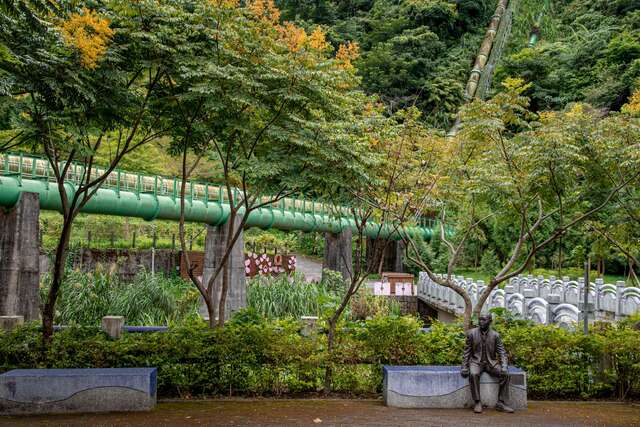Bai Leng Zhen Memorial Park Introduction
Baileng Canal was established in 1928 during the Showa era (the 3rd year of Showa), originally for the irrigation of the sugarcane seedling breeding farm of the Japanese colonial government in Danan Village. After the end of World War II, it was transformed into a seedling farm under the Forestry Bureau. The Japanese government began planning irrigation facilities in 1927 and obtained approval from the then council to allocate a budget of over 1.45 million yen. Construction commenced in December 1928 and was completed in May 1932, taking a total of 3 years and 6 months, with total project costs reaching 1.04 million yen. Water testing was completed in September, and a water inauguration ceremony was held on October 14. During the ceremony, Mr. Shigeaki Suemura, Director of the Agricultural Division of the Taiwan Governor-General's Office, named the water diversion canal for the Danan Village Sugarcane Seedling Farm “Baileng Canal.” The canal is 16.5 kilometers long, mainly constructed along the hillside, with the main structures including 22 tunnels, 14 aqueducts, and 3 inverted siphons, one of which is 346 meters long and has a diameter of 1.2 meters, crossing a valley, making it a significant hydraulic engineering project. After the 921 earthquake, the canal's integrity was compromised, prompting the irrigation association to construct new water pipes nearby (in blue), creating a parallel appearance of old and new systems. The inverted siphon pipes, which use a principle opposite to that of traditional siphons by being installed upside down, are commonly referred to as inverted siphon pipes. Designed on the principle of connecting pipes, the green steel circular pipes climb along the hillside, with engineering challenges that are hard to articulate. The beautiful and magnificent No. 2 inverted siphon pipe is the largest of its kind in the Far East and was selected as the 26th of the national top 100 scenic spots in 2001.



























